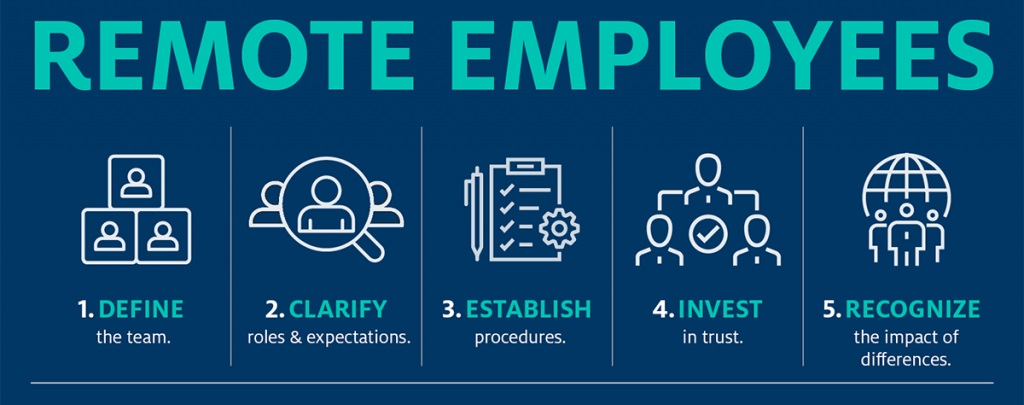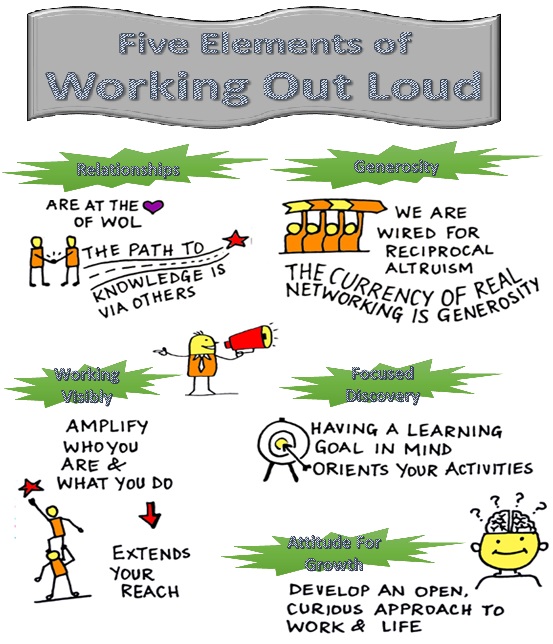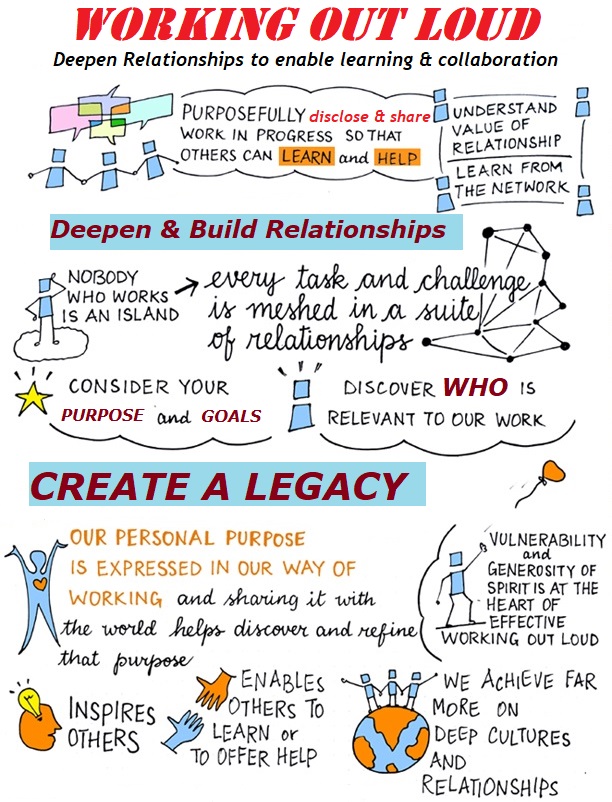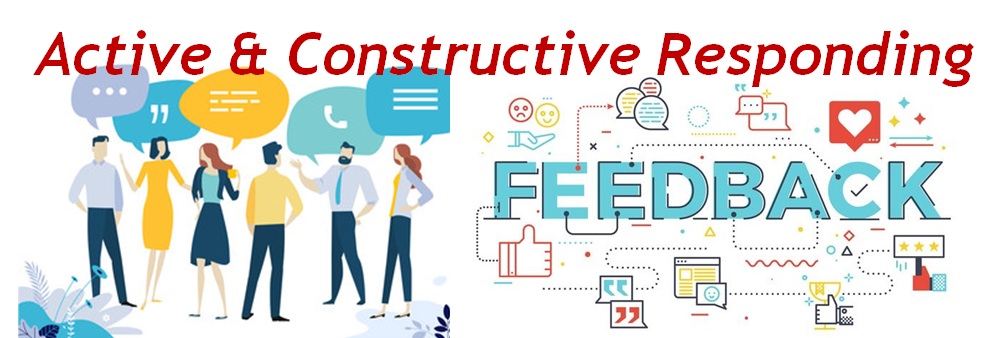
The feedback we receive can sometimes feel like nonsense. For Example, an employee in an organisation once stated: “This company doesn’t care about parents.” The employee then proceeded to gripe about the lack of maternity and paternity benefits. Admittedly, the CEO agreed that the company’s maternity and paternity leave policies could be improved… But she was livid about the broad accusation that “this company doesn’t care about parents.” What an unfair generalization. The CEO was conflicted about how to react to the feedback:
- She didn’t want to come off as being defensive to her employee.
- But she also didn’t want sweeping, inflammatory remarks to be seen as well-received by the employee.
How was she supposed to take this feedback? It felt like nonsense. Nonsense feedback usually comes in one of three forms…
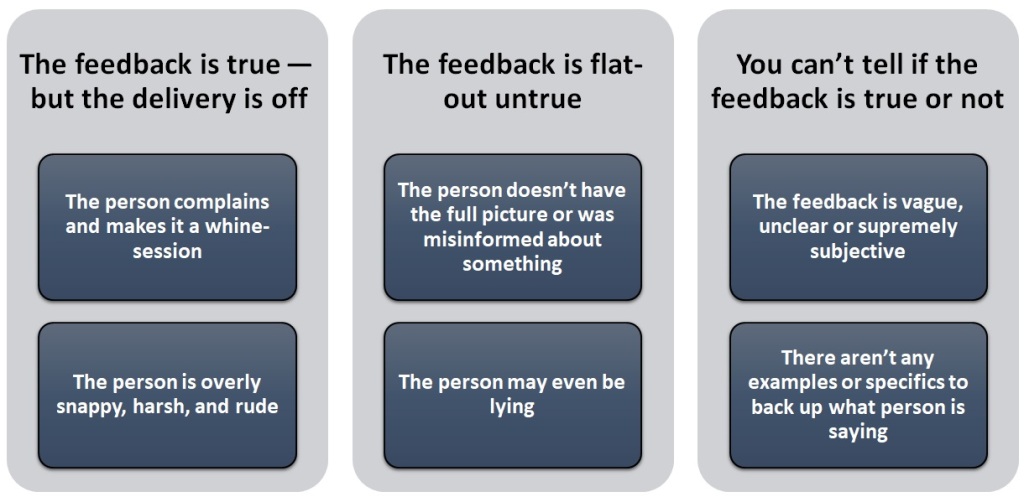
Given that how we receive feedback as a leader sets the tone of openness and honesty in the company, this is especially challenging. If we dismiss the feedback too readily or respond negatively to it, we are likely to discourage that person (and the rest of our team) from ever voicing their honest opinion again. But, if the feedback goes completely unchecked, then untrue, rude, or vague feedback could become normalized, accepted behaviour in the company. Some ways to receive each type of the feedback above and still encourage an open, honest company environment may be:-
- If the feedback is untrue:
When we receive feedback that is inaccurate, misinformed (or even a straight-up lie), it’s important to not just blurt out, “I think you’re wrong.” Such a knee-jerk response — even if we are in the right — will come across as defensive to the other person. Instead, take a little time (be it 30 minutes, or a day or two) to verify that the feedback is indeed false, before letting that other person know. This way, we can first make sure we do have your facts straight, and more calmly point out and share why we think their feedback is untrue.
We may also want to acknowledge our own role in why they may have been misinformed, and how we could have contributed to the issue. Rarely does an employee independently give incorrect feedback (unless they are maliciously lying). Usually, as leaders, we have not done our role well enough to shine a light on something — hence their misinformed feedback.
- If the feedback is true, but poorly delivered:
When someone blows up at us or goes on a complaining rant, no matter how true the content of what their feedback may be to us — we will want to make aware to the other person that their delivery was inappropriate. Again, to make sure we don’t come across as defensive, we don’t want to say: “You’re a complainer” or “That was rude.” Instead, we can use this as an opportunity to guide/coach them. Show that we are not resentful (example- “not to detract from the merit of what you’re saying,”) and be forward-looking by (example- “in the future” or “next time”). We want this person to continue to speak up and give us their candid perspective, just not in the manner they delivered it in. Communicate this to them calmly, kindly, and directly.
- If you cannot tell whether or not the feedback is true:
Unclear feedback is perhaps the most frustrating type of feedback to receive because it can feel like a waste of our time to try to unpack. Asking questions is the key to learning and getting to the truth of the feedback.
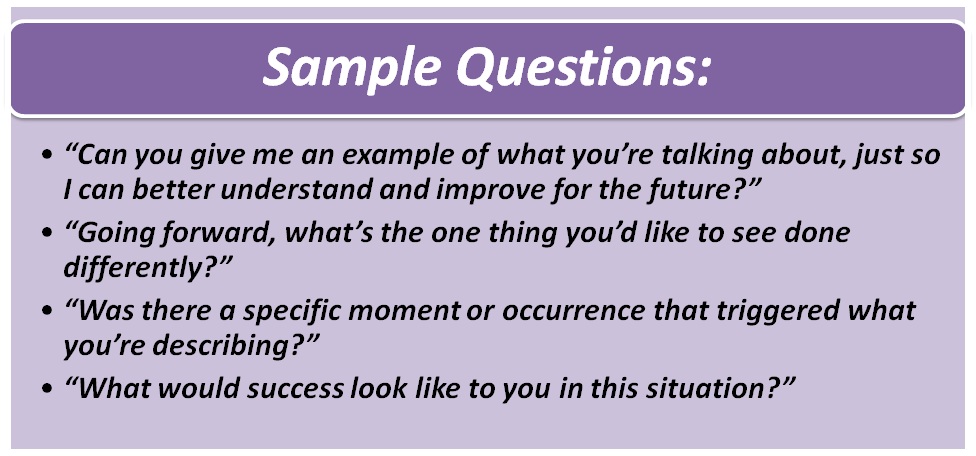
Questions can also serve as guideposts to our employees, encouraging them to give us feedback with more clarity and in a specific manner the next time.
Handling these three types of untrue, rude, and vague feedback require a bit of patience and self-discipline. Our natural reaction in our inner monologue must be quelled and placed aside.
Ways To Give Employee Recognition Sincerely
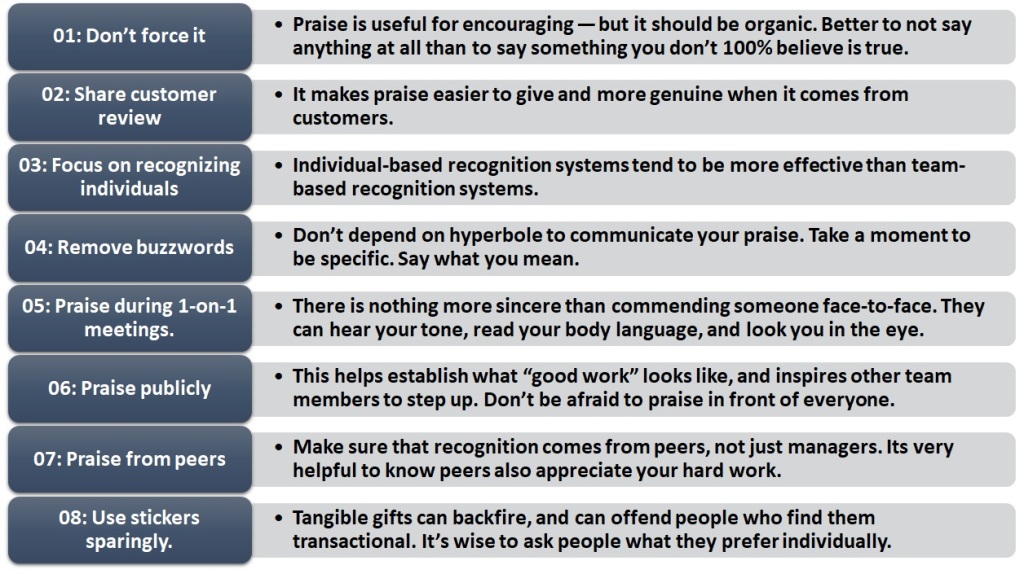
Employee recognition is about saying something and meaning it. If a heart emoji or a free lunch are the only ways we say “thank you” or “good job” in our company — we are missing the point. If we want to say something sincerely, we must say it with words. These days, we care about the stickers — not the words. We rely on stickers, gadgets and trinkets to express our gratitude because, often times, we don’t know what to say, how to say it, or when to say it.
There are, of course, more than these ways to deliver recognition for a job well done. The most important piece is not to get lazy. Use your words. Be specific. And mean them.
Correct Type of Feedback
Choosing the correct type of feedback can improve relationships. Helping people to grow and improve is very satisfying. Hence constructive and re-enforcing feedback seems natural to use often. However there is a continuum of behaviour that prompts feedback and unfortunately it should not always result in re-enforcing feedback. The feedback approach should change to suit the type of behavior we are providing feedback about. Choosing the correct approach is crucial in effecting the outcome that will help the individual, team and ourselves.
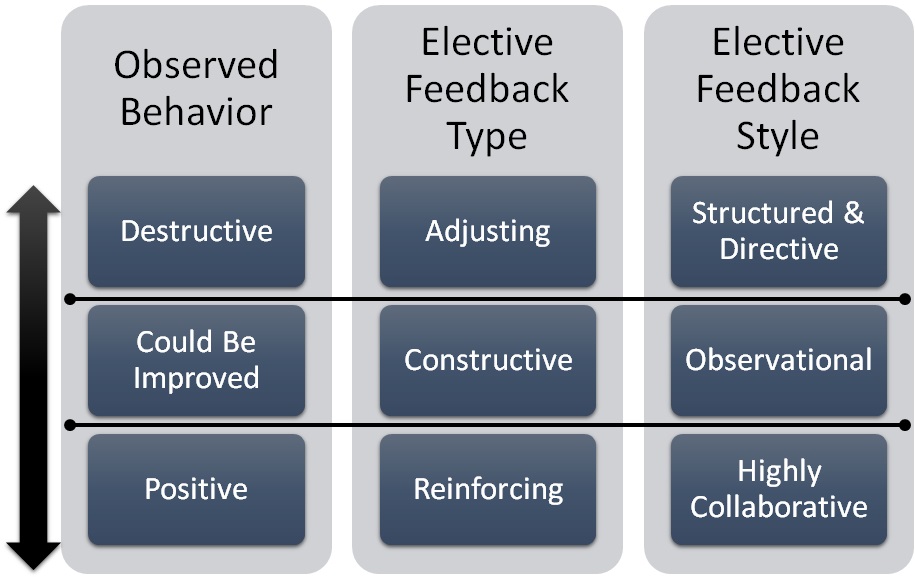
What is Active and Constructive Responding?
Active and constructive responding (ACR) refers to one of four ways in which we respond to good news; it is part of a theoretical framework proposed by psychologist Shelly Gable. Active and constructive responding is the most effective way to respond, giving both the deliverer of good news and the listener a positive outcome. (The other three ways include passive and constructive, active and destructive, and passive and destructive.)
How do you react to a friend when they share good news? Imagine a friend announces that she received a promotion at work. There are many ways in which we could respond to this news. An ACR responder might say, “That’s amazing! I knew they would recognize your hard work. Let’s grab a bottle of champagne and celebrate. I’d love to hear more about your new position.” When people share good news, they want you to share in their joy. Conveying authentic interest, pride, and even curiosity in someone’s good news are all hallmarks of ACR.
The other three typical forms of response include a passive and constructive reaction. One might say, “That’s good news.” This response includes positive feedback but does not include an active, elaborative component. An active and destructive responder may say, “I never get to see you as it is. If you take this promotion, you’re going to be even more stressed than you are now.” Although you have actively elaborated in response to the news, the content is destructive. Then there is the least effective response which is passive and destructive – “Okay. Are you ready for lunch?” This response is passive and contains no positive, affirming information. Essentially, it’s a blow off to the good news.
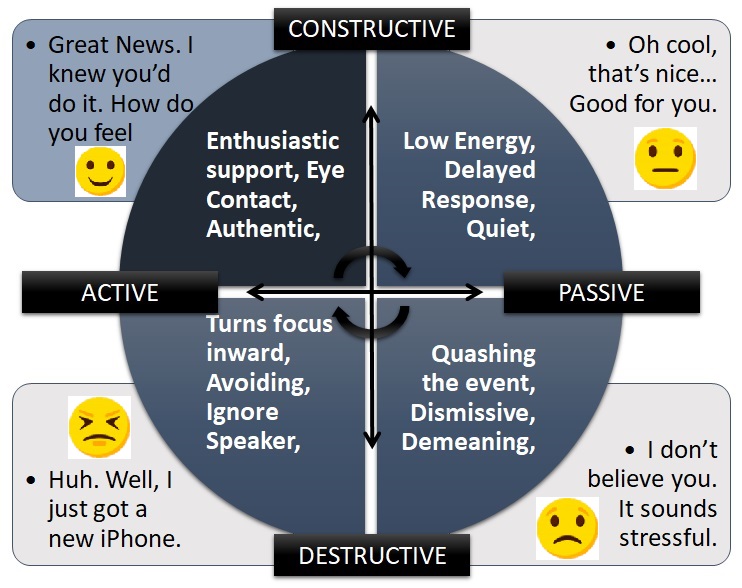
ACR extends to nonverbal communication as well. It includes eye contact and smiles, while an active and destructive response features frowning or glares. Both types of passive response include little or no emotional expression. A passive and destructive response may also include a lack of eye contact or leaving the room.
Uses in daily Life
ACR helps develop and maintain strong personal relationships. If we retrain ourselves to offer active and constructive responses to the people in our life, we will find ourselves feeling more positive as well as receiving positive feedback from others. For example, when a child tells us that he/she has been selected for the school play, resist the urge to complain about how much more driving that will mean for us or how much his/her costume will cost. Resist the urge to just say, “I’m proud of you.” Instead, congratulate him/her with specific statements of praise. For example, you might say, “That’s great news! You practiced so hard over the summer, and now it’s paying off. I can’t wait to see you on stage. Tell me more about it!”
Breaking the habit of making passive or destructive responses can be difficult. Over time, it will become natural to respond actively and constructively to others’ good news.
Content Curated By: Dr Shoury Kuttappa




